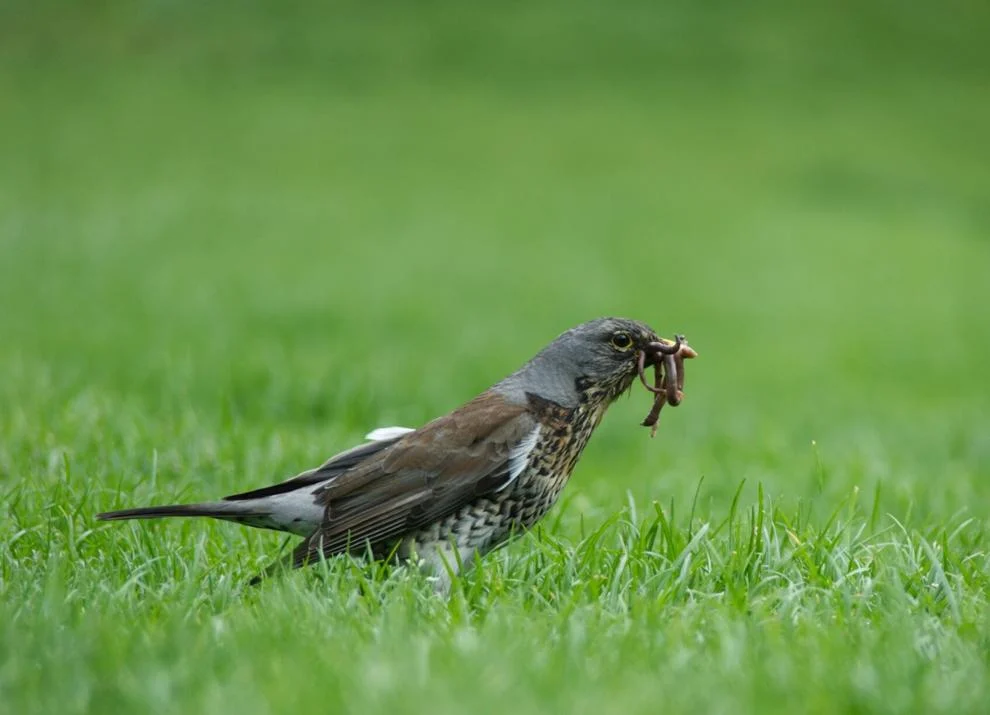Join forces with earthworms for a healthier lawn
By Julie Banken
WSU Chelan/Douglas County Master Gardener


From tip to tail, the tubular body of an earthworm is devoted to digesting organic matter. Bits of decaying plants or animals go in one end, then are ground up, broken down, and enriched as they pass through the worm’s digestive system.
The waste that comes out the back end of a worm is better known as its castings. At a price of over $1 a pound in the store, earthworm castings are worth a small fortune. They are a rich source of nutrients, enzymes, and beneficial bacteria, and because they help retain moisture, worm castings also improve the overall structure of garden soil.
Earthworms are known for digging tunnels which aerate the ground, but they also leave free fertilizer behind wherever they go. Castings can be spread out or concentrated in one place, depending on the type of worm dropping them.
The Earthworm Society of Britain categorizes earthworms into three main groups based on their burrowing behavior and where they feed in the soil profile. All three types of worms have become naturalized in Eastern Washington gardens.
Pale-colored, medium-sized endogeic worms spend their whole lives underground. They eat organic matter buried in the soil, spreading their castings throughout networks of branching tunnels.
Fun Worm Fact
It is an urban myth that worms come to the surface when it’s raining to escape drowning. Earthworms can live several weeks in water. When the surface is wet, they take advantage of the opportunity to travel easily across the ground. They find mates and seek out new places to burrow. Unfortunately, many get trapped on cement in the process.
— Julie Banken,
WSU Master Gardeners
In contrast, epigeic worms won’t be found under the ground. These bright red worms don’t make tunnels but stay above the soil surface where they feed on decaying matter in the leaf litter. Composting worms such as red wigglers are a subtype of this group. They prefer to stay in moist, rotting vegetation where they are very efficient at converting it into worm castings.
Anecic earthworms like nightcrawlers are a different story. Dark at the head and pale at the tail, they are the largest of the earthworms. They excavate and make permanent homes in vertical burrows that can be impressively deep. Nightcrawler burrows can reach 6 feet below the ground.
To keep their burrows clear, anecic worms leave their castings on the surface of the ground. Over time, these piles of worm waste grow to form “middens.” Mounds of worm castings all over a lawn can be too much of a good thing, as middens in clay soil can make turf bumpy and uneven.
Fortunately, it is possible to reap the benefits of the aeration and fertilizer that earthworms provide while at the same time having an even surface to mow. Nightcrawler middens tend to build up in old lawns where earthworm activity is concentrated near the ground surface. It may sound counter-intuitive to someone with lots of worm middens in their grass, but to keep your lawn healthy (and flat), make it a place where earthworms can thrive.
A WSU Chelan and Douglas County Master Gardener column appears weekly in The Wenatchee World. Julie Banken is a Master Gardener intern. To learn more, visit bit.ly/MGchelandouglas or call (509) 667-6540.
To make your lawn a healthy home for earthworms:
Aerate at least every other year, or yearly if you have heavy, clay soil. Earthworms can’t burrow in hard, compacted ground. Aeration loosens the soil and allows water and oxygen to penetrate more deeply.
Add organic matter. Use a mulching mower weekly and leave the grass clippings on the lawn for the worms to eat. Avoid chemical fertilizers, as they contain acids and urea which are toxic to earthworms. Let the worms turn the grass clippings into fertilizer instead.
Keep your yard free of toxins. Chemicals in many types of pesticides and herbicides can devastate earthworm populations by reducing their growth and reproduction or killing them outright. They can also wipe out worms’ gut bacteria so they can’t digest their food.
Irrigate smartly. Earthworms don’t have lungs but take in oxygen through mucus on their skin; if they dry out, they will die. Frequent, shallow watering confines worm populations to the ground’s surface. Give worms more room to roam by watering deeply and less often.
— Julie Banken, WSU Master Gardeners
